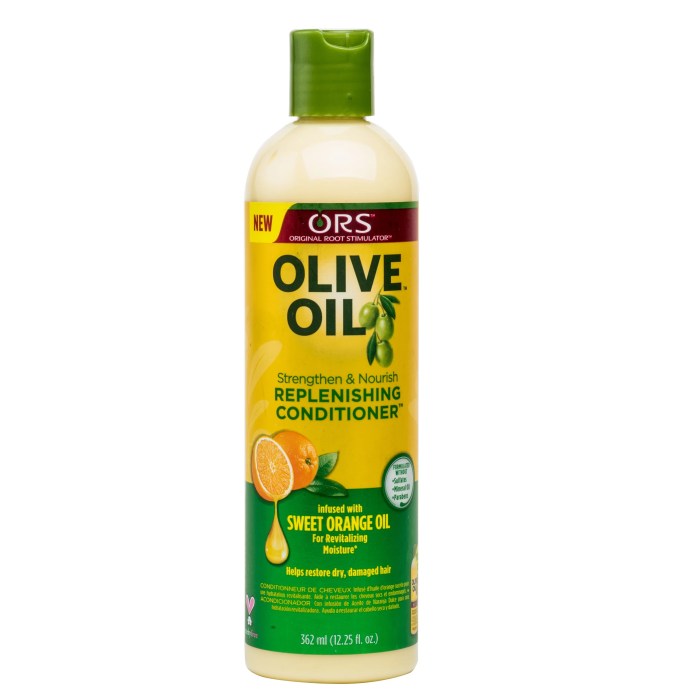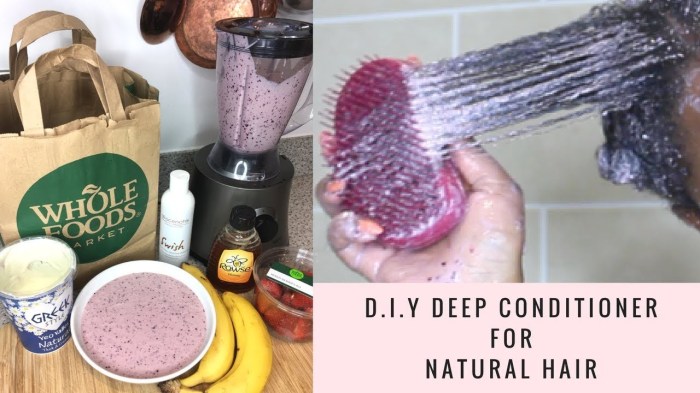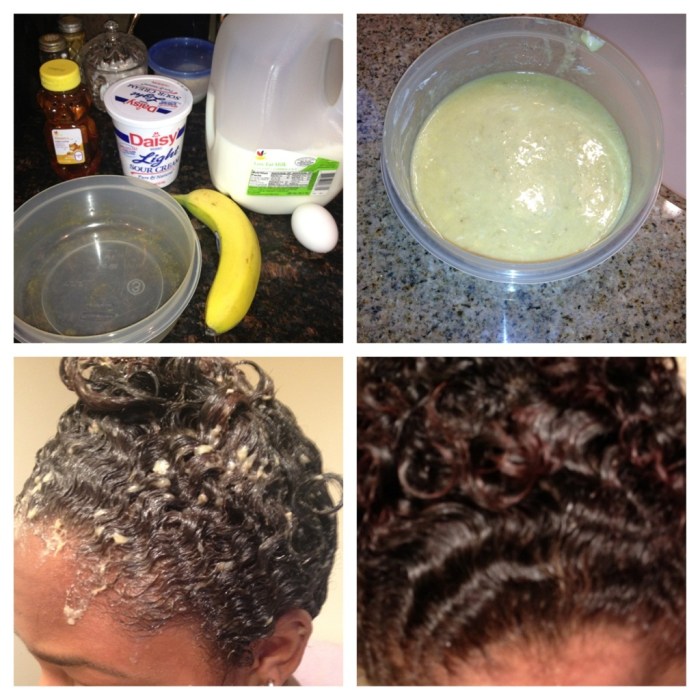Embark on a journey to rejuvenate your hair with a deep conditioner, a luxurious treat that revitalizes and restores your locks’ natural beauty. Discover the transformative power of natural ingredients as you create your own deep conditioner, tailored to your unique hair needs.
Dive into a world of nourishing oils, soothing butters, and healing herbs, and unlock the secrets of healthy, radiant hair.
Whether you struggle with dry, brittle strands or oily, lackluster hair, a deep conditioner can be your savior. By understanding the properties of natural ingredients and experimenting with different recipes, you can create a deep conditioner that addresses your specific concerns, leaving your hair feeling soft, manageable, and full of life.
Introduction

Deep conditioning is a crucial hair care routine that provides intense nourishment and hydration to your hair. It helps to restore hair’s health, strength, and luster, especially if it’s been damaged by chemical treatments, heat styling, or environmental stressors. By incorporating deep conditioning into your hair care regimen, you can improve the overall condition of your hair, making it softer, smoother, and more manageable.
Using natural ingredients in DIY deep conditioners offers several advantages. Natural ingredients are often gentler on the hair and scalp, reducing the risk of irritation or allergic reactions. They are also typically more affordable and accessible compared to commercial deep conditioners, which often contain harsh chemicals and additives.
Benefits of DIY Deep Conditioners
- Natural ingredients are generally milder and less likely to cause irritation or allergic reactions.
- DIY deep conditioners are often more affordable and accessible compared to commercial products.
- You can customize your deep conditioner to address your specific hair needs and preferences.
- DIY deep conditioners allow you to avoid harsh chemicals and additives found in many commercial products.
Essential Ingredients

Creating a deep conditioner at home involves selecting natural ingredients known for their beneficial properties for hair health. These ingredients include oils, butters, and herbs, each possessing unique characteristics that contribute to hair nourishment and revitalization.
Oils
Oils are a crucial component of deep conditioners, providing essential fatty acids and vitamins that nourish and protect hair. Some commonly used oils include:
- Coconut Oil: Rich in lauric acid, it penetrates the hair shaft, reducing protein loss and promoting hair growth.
- Olive Oil: Contains antioxidants that protect hair from damage, while its emollient properties add shine and softness.
- Argan Oil: Abundant in vitamin E and fatty acids, it helps repair damaged hair, reduce frizz, and enhance hair elasticity.
- Jojoba Oil: Similar to the natural sebum produced by the scalp, it balances oil production, moisturizes hair, and prevents breakage.
Butters
Butters, derived from natural sources, provide deep conditioning and intense moisture to hair. Some popular butters include:
- Shea Butter: Known for its emollient properties, it softens and moisturizes hair, reducing dryness and promoting hair growth.
- Cocoa Butter: Rich in antioxidants and fatty acids, it helps repair damaged hair, add shine, and protect against environmental stressors.
- Mango Butter: Contains vitamins A and E, which promote hair growth and strengthen hair follicles, while also adding moisture and shine.
Herbs
Herbs, with their natural properties, offer additional benefits to hair health when incorporated into deep conditioners. Some commonly used herbs include:
- Rosemary: Stimulates hair growth, reduces dandruff, and improves scalp circulation.
- Green Tea: Rich in antioxidants, it protects hair from damage and promotes hair growth.
- Chamomile: Soothes the scalp, reduces inflammation, and adds shine to hair.
- Lavender: Promotes relaxation, reduces stress, and improves scalp health.
Recipe Variations

Deep conditioners can be tailored to address specific hair types and concerns. Experiment with different recipes to find the one that works best for your hair.
Here are a few variations to try:
Dry Hair
This deep conditioning recipe is perfect for dry, brittle hair. It will help to restore moisture and shine.
- Ingredients:
- 1/2 cup coconut oil
- 1/4 cup honey
- 1/4 cup aloe vera gel
- 10 drops of rosemary essential oil
- Directions:
- In a bowl, combine all of the ingredients.
- Mix well until a smooth paste is formed.
- Apply the paste to your hair, starting at the ends and working your way up to the roots.
- Cover your hair with a shower cap and leave it on for 30 minutes.
- Rinse your hair thoroughly and style as usual.
Oily Hair
This deep conditioning recipe is perfect for oily hair. It will help to absorb excess oil and leave your hair feeling clean and refreshed.
- Ingredients:
- 1/2 cup bentonite clay
- 1/4 cup apple cider vinegar
- 1/4 cup water
- 10 drops of peppermint essential oil
- Directions:
- In a bowl, combine all of the ingredients.
- Mix well until a smooth paste is formed.
- Apply the paste to your hair, starting at the roots and working your way down to the ends.
- Cover your hair with a shower cap and leave it on for 30 minutes.
- Rinse your hair thoroughly and style as usual.
Damaged Hair
This deep conditioning recipe is perfect for damaged hair. It will help to repair and strengthen your hair, leaving it feeling soft and silky.
- Ingredients:
- 1/2 cup shea butter
- 1/4 cup coconut oil
- 1/4 cup honey
- 10 drops of ylang-ylang essential oil
- Directions:
- In a bowl, combine all of the ingredients.
- Mix well until a smooth paste is formed.
- Apply the paste to your hair, starting at the ends and working your way up to the roots.
- Cover your hair with a shower cap and leave it on for 30 minutes.
- Rinse your hair thoroughly and style as usual.
Application and Techniques

To effectively apply deep conditioners, begin by sectioning your hair into manageable parts. Apply a generous amount of the conditioner to each section, starting from the ends and working your way up to the roots. Use your fingers to gently massage the conditioner into your scalp, paying attention to areas that tend to be dry or damaged.
Once all sections are covered, use a wide-toothed comb to distribute the conditioner evenly throughout your hair. To enhance the effectiveness of the deep conditioning treatment, consider the following techniques:
Using Heat
Applying heat to your hair while deep conditioning can help open up the hair cuticles, allowing the conditioner to penetrate more deeply. You can use a hooded dryer, heat cap, or simply wrap your hair in a warm towel. The heat will help the conditioner to work its magic, leaving your hair feeling softer, smoother, and more manageable.
Leaving the Conditioner Overnight
Leaving the deep conditioner in your hair overnight can give it even more time to work its magic. This is especially beneficial for those with dry, damaged, or coarse hair. Simply apply the conditioner as usual, cover your hair with a shower cap or plastic wrap, and leave it in overnight.
Rinse it out in the morning and enjoy your newly conditioned hair.
Rinsing and Follow-Up Care

After the recommended deep conditioning time, it’s essential to rinse the product out thoroughly to prevent product buildup and maintain a healthy scalp. Here’s how to properly rinse out the deep conditioner and care for your hair afterward:
Rinse Thoroughly:
- Use warm water to rinse out the deep conditioner. Hot water can open up the hair cuticles, making it more prone to damage, while cold water may not be effective in removing the product.
- Rinse your hair for several minutes, ensuring all the conditioner is washed away. You may need to rinse for longer if you have thick or long hair.
- Check if the water runs clear after rinsing. If the water is still cloudy or has a milky appearance, continue rinsing until it becomes clear.
Clarifying Shampoo:
- After deep conditioning, it’s recommended to use a clarifying shampoo to remove any residual product buildup and restore the hair’s natural pH balance.
- Clarifying shampoos contain stronger detergents that can effectively remove product buildup, dirt, and excess oil from the hair and scalp.
- Use a clarifying shampoo once or twice a month, or as needed, to maintain a healthy scalp and prevent product buildup.
Maintaining Healthy Hair:
- Deep conditioning is an intensive treatment that should be done every 1-2 weeks, depending on your hair’s needs. Over-conditioning can weigh hair down and make it appear greasy.
- In between deep conditioning treatments, use a regular conditioner after every wash to maintain moisture and prevent dryness.
- Avoid using harsh shampoos and styling products that can strip your hair of its natural oils and cause damage.
- Protect your hair from sun exposure by wearing a hat or scarf when outdoors. UV rays can damage the hair and make it more prone to dryness and breakage.
Troubleshooting Common Issues

Even with careful preparation and application, you may encounter certain challenges during the deep conditioning process. Here are some common issues and recommendations to address them effectively:
Product Buildup
Excessive product application or inadequate rinsing can lead to product buildup, weighing hair down and hindering its natural movement. To prevent this:
- Use the recommended amount of product based on your hair length and thickness.
- Apply the deep conditioner evenly, focusing on the ends and avoiding the roots.
- Rinse thoroughly with lukewarm water until the water runs clear.
- Use a clarifying shampoo once a week to remove any residual product buildup.
Scalp Irritation
Some deep conditioners may contain ingredients that can cause scalp irritation or allergic reactions in sensitive individuals. To minimize this risk:
- Perform a patch test on a small area of your scalp before using the deep conditioner.
- Choose a deep conditioner that is specifically designed for sensitive scalps.
- Avoid applying the deep conditioner directly to your scalp. Instead, start from the mid-lengths and work your way down to the ends.
- Rinse thoroughly with lukewarm water until the water runs clear.
Lack of Desired Results
If you’re not satisfied with the results of your deep conditioning treatment, consider the following factors:
- Ensure that you’re using a deep conditioner that is appropriate for your hair type and concerns.
- Follow the application instructions carefully, paying attention to the recommended processing time.
- Use a shower cap or plastic wrap to create a warm, moist environment that enhances the absorption of the deep conditioner.
- Leave the deep conditioner in for the recommended amount of time, but avoid over-conditioning, which can lead to limp, weighed-down hair.
- Rinse thoroughly with lukewarm water until the water runs clear.
Safety Precautions

Ensuring the safety of your hair and skin is paramount when using deep conditioners. Before incorporating any new deep conditioner into your hair care routine, conducting a patch test is essential, especially if you have sensitive skin or known allergies.
Furthermore, proper handling and storage of ingredients and finished deep conditioners are crucial to prevent contamination or deterioration. Always adhere to the recommended storage guidelines and avoid exposing ingredients or deep conditioners to extreme temperatures or direct sunlight.
Patch Test
- Apply a small amount of the deep conditioner to a small area of skin on your inner forearm.
- Cover the area with a bandage and leave it undisturbed for 24 to 48 hours.
- Monitor the area for any signs of irritation, such as redness, itching, or swelling. If any adverse reaction occurs, discontinue use and consult a healthcare professional.
Safe Handling and Storage
- Wear gloves when handling ingredients, especially if they are potentially irritating or corrosive.
- Store ingredients and finished deep conditioners in airtight containers in a cool, dry place away from direct sunlight.
- Discard any deep conditioner that has changed in color, texture, or odor.
Final Thoughts

Deep conditioning is a labor of love that rewards you with healthy, radiant hair. As you embark on this journey of hair care, remember that consistency is key. Regular deep conditioning treatments will help maintain your hair’s health and vitality, allowing you to flaunt your locks with confidence.
Embrace the power of nature and the transformative effects of deep conditioning, and witness the remarkable transformation of your hair.
Questions and Answers
Can I use a deep conditioner on my hair every day?
Deep conditioning too frequently can weigh hair down and lead to product buildup. Aim for deep conditioning treatments once a week or every two weeks, depending on your hair’s needs.
What is the best way to apply a deep conditioner?
Section your hair into manageable parts and apply the deep conditioner generously, starting from the ends and working your way up to the roots. Massage the conditioner into your scalp to stimulate blood flow and promote absorption.
How long should I leave a deep conditioner in my hair?
The ideal duration for leaving a deep conditioner in your hair depends on the product and your hair’s condition. Generally, leave it on for at least 30 minutes, but you can extend it up to overnight for a more intensive treatment.
Can I use a deep conditioner on dry hair?
Yes, deep conditioning is particularly beneficial for dry hair. Choose ingredients that are known for their moisturizing and nourishing properties, such as coconut oil, shea butter, and avocado.



